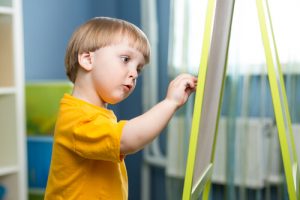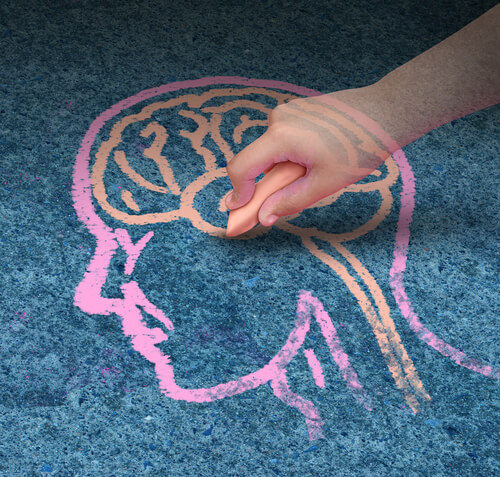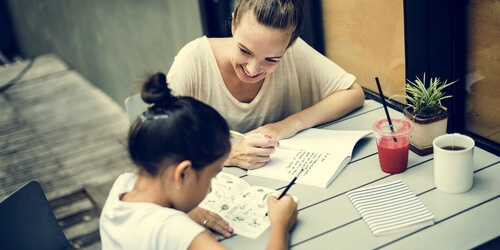7 Brain Gym Exercises For Children

Brain gym is a training routine that prepares both body and mind for learning.
It consists of exercises that help relieve stress, channel pent-up energy and awaken the brain.
Kids can do these exercises at home or at school. In addition to being convenient, they’re fun and engaging.
The essence of this technique is to engage the brain through physical movements designed to stimulate and challenge.
A big plus of brain gym exercises is that they can be practiced by people of any age.
So, if you need to focus your attention on an activity, try one of these exercises before you start.
Brain gym is a technique that seeks to generate new neuronal connections to achieve balance and enhance learning. It detects and balances tensions in the area of learning that accumulate throughout our lifetimes, and develops creativity and goal orientation.
-Susana Buscaglia-
Brain gym for children: a way to boost learning
1. Draw the number 8
Ask your child to draw the number 8 over and over again using their finger. They can “draw” the figure in the air, or you can give them a piece of paper and show them how to trace the line.
The important part of this exercise is to use their non-dominant hand: a right-handed child should draw with their left hand, and vice versa.
This stimulates the creative hemisphere of the brain and activates the muscles in the hand.
2. Cross crawl
This exercise helps burn off excess energy, which is ideal before beginning an activity that demands focus.
This simple series of movements activates both hemispheres of the brain, which work together.
Your child should stand up, and touch their left knee with their right elbow. Next, they repeat this movement in reverse, touching their left elbow to their right knee.
Alternate and repeat.

3. Double doodles
This is a two-handed drawing technique: little ones should try to draw the same figure with both hands at once.
This activity helps develop written language skills, mathematical ability and symbolic thinking.
This exercise is a good one to try before starting a complicated homework task.
4. Tracing shapes
In this exercise, the child draws a triangle with their right hand, whether in the air or on a piece of paper. At the same time, they should try to draw a circle with their left hand.
Keep trying this activity until your child is able to draw the figures independently. This is a disassociation exercise that boosts brain power.
5. Rub your belly, pat your head
Here’s another activity that stimulates both halves of the brain.
Your child should start by rubbing their belly with one hand, in a circular motion. Then, they need to try to pat their head with their other hand.
This activity gets the brain ready to learn and assimilate new information.
6. Pinkies and pointers
Get your child to make a fist with both hands. They should try to lift their pinky on their right hand, and at the same time lift their index finger on their left.
When they manage to do it, switch sides: index finger on the right hand side, pinky on the left.
This exercise helps to improve concentration and develop fine motor skills.

7. Neck stretches
Invite your little one to breathe deeply, relax their shoulders and tip their head a little way back, with their eyes closed.
Then, they should move their head from side to side, making circular motions.
Deep breathing is a key part of this relaxing exercise. The movements help to control breathing and oxygenate the brain.
Why not put together a quick morning routine of 5 to 10 minutes of exercises like these?
By doing this daily, you’ll prepare your children to process all the information they receive during their school day.
With brain gym exercises, children develop basic skills from an early age. These include coordination, balance, gross and fine motor skills, concentration and visual perception.
Practice these activities before school or doing homework to give your child the tools to concentrate and focus.
All cited sources were thoroughly reviewed by our team to ensure their quality, reliability, currency, and validity. The bibliography of this article was considered reliable and of academic or scientific accuracy.
- Dennison, Paul. E., y Gail E. Dennison. (1994). Brain Gym. Teachers Edition, Ventura, California, Edu-Kinesthetics.
- Hyatt, K. J. (2008). Brain Gym®. Remedial and Special Education.
- Ibarra, L. M. (2000). Gimnasia cerebral. Garnick México. https://elabcdmarketing.com/wp-content/uploads/2018/10/GIMNASIA-CEREBRAL.pdf
- Romero, Rosario, Cueva, Henry, Barboza, Luis. (2014). La gimnasia cerebral como estrategia para el desarrollo de la creatividad en los estudiantes. Omnia. https://www.redalyc.org/pdf/737/73737091006.pdf
This text is provided for informational purposes only and does not replace consultation with a professional. If in doubt, consult your specialist.








